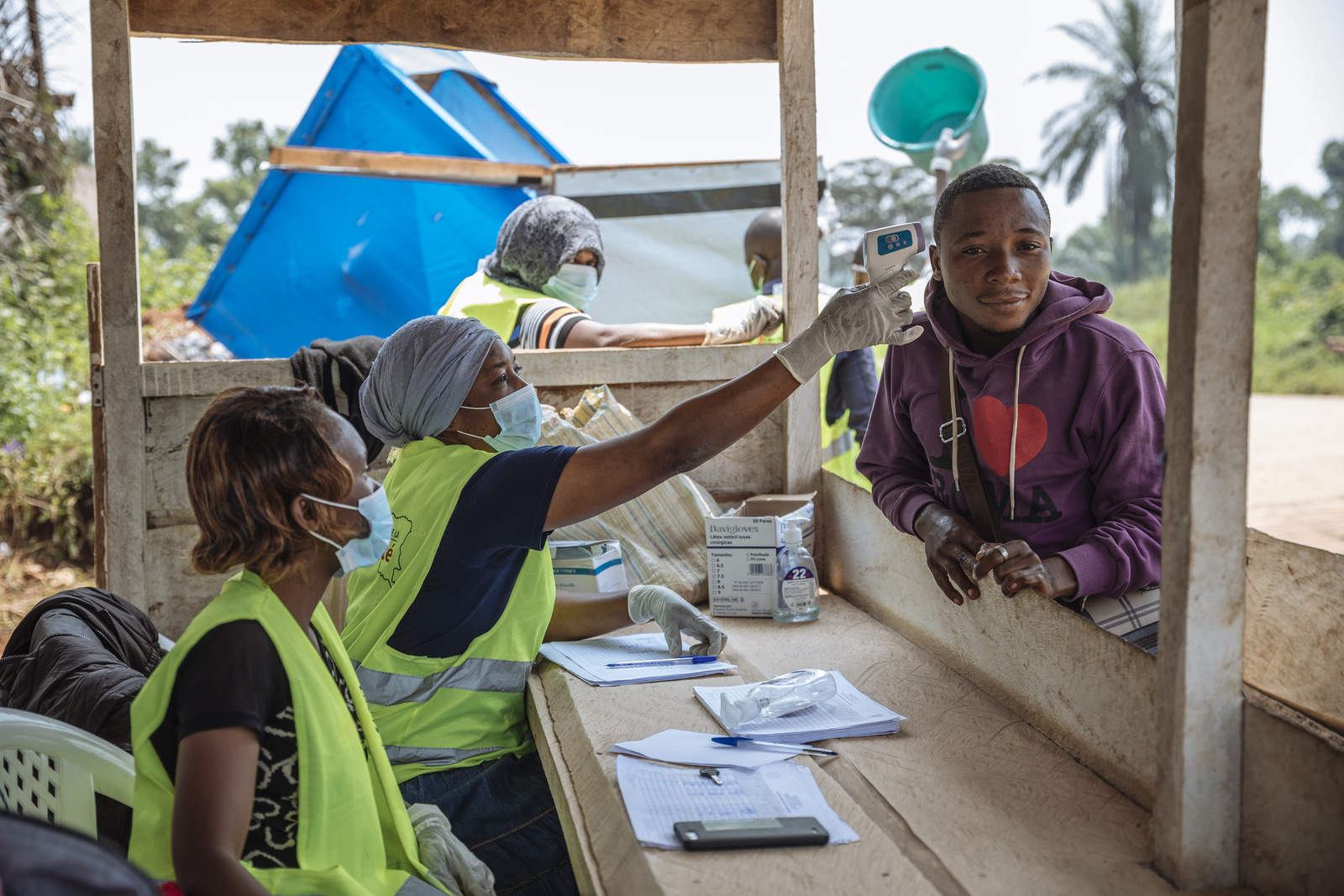As the world grapples with COVID-19, the International Organization for Migration (IOM) joins the Democratic Republic of the Congo (DRC) and its neighbouring countries to celebrate the end of the battle against another deadly virus, Ebola, in the conflict-ridden east.
Lessons drawn from the response are helping IOM to tackle both the current coronavirus pandemic and a new Ebola outbreak in DRC’s north-western Équateur province, with a focus on the link between human mobility and public health.
After 694 days – 23 months – battling the Ebola virus disease (EVD), DRC officially declared on Thursday the end of an epidemic that infected 3,317 and killed 2,280 people in North-Kivu and its surrounding areas. The second largest Ebola epidemic in history and the tenth the country has faced, was declared on 1 August 2018; the last case reported was on 27 April 2020.
In collaboration with Ministry of Health, the World Health Organization (WHO) and other key partners, IOM supported the following key five areas of intervention to help end the deadly outbreak in the region.
Population mobility mapping

Since the beginning of the outbreak, IOM carried out 28 PMM exercises to support decision-making.
Health screenings at key transit locations
During the outbreak, systematic health screenings at borders and other strategic locations - combined with handwashing and the provision of reliable information - helped reduce transmission to neighbouring countries and among highly mobile populations, while continuing to enable the movement of people and goods, and minimizing disruption to the economy.

A health screening point in Beni, the epicentre of DRC's ninth Ebola outbreak. Photo: Muse Mohammed / IOM
IOM directly led this aspect of the response by carrying out health screenings at land border crossings and in airports (known as “points of entry” or PoEs), and other strategic transit spots. The Organization deployed over 1,500 workers who conducted over 190 million screenings 169 locations in DRC, South Sudan, Burundi and Uganda. To facilitate operations past sunset, solar panels were installed by IOM in many of the health screening locations.
Through these health screenings at PoEs and elsewhere, IOM raised close to 17,000 alerts, dozens of which were laboratory-confirmed as positive EVD cases.
For sustained disease surveillance and given the current COVID-19 pandemic, health screening activities at PoEs and other transit and congregation locations continue in all four countries, and will be launched shortly in Rwanda. In addition, in Tanzania, IOM was asked to carry out an assessment on PoEs and help advise on the implementation of public health measures.
Provision of water, sanitation and hygiene services
To help prevent and control infections, IOM installed or upgraded water, sanitation and hygiene (WASH) services at PoEs and other key transit and congregation locations throughout DRC, South Sudan, Burundi and Uganda. All 169 health screening points were equipped with several handwashing stations, including clean water with chlorine.

Handwashing station at one of the border crossings between DRC’s populous city of Goma and Rwanda, La Grande Barrière. Photo: Muse Mohammed / IOM
Trainings and simulations for local responders
To build the capacity of government workers and other local responders, IOM delivered a series of trainings in DRC and in neighbouring countries. For example, a mobile medical unit from the Congolese military deployed to strengthen surveillance at PoEs along the DRC-Uganda border received specialized training on health screenings.

Government staff trained to carry out health screenings at one of the border crossings between DRC’s populous city of Goma and Rwanda, La Petite Barrière. Photo: Muse Mohammed / IOM
Informing communities of the risks and engaging them in the response
In a battle that could only be led and won by the Congolese people themselves and their neighbours, IOM helped ensure that women, men and children on the move were informed of the health risks and how to protect themselves and their loved ones. Information campaigns were carried out across the region through focus group discussions, posters, door-to-door engagement, radio programmes and more.

Travellers attend an IOM information session on how to avoid EVD transmission, at a point of entry in Yei, South Sudan. Photo: Olivia Headon/IOM
The messaging included handwashing recommendations, information on how to reduce transmissions and health services, and the importance of respecting public health measures. In particular, a series of risk awareness dialogues were held with traders so they could carry on making a living, armed with the necessary knowledge on how to keep themselves and their loved ones safe.
Dialogues were also held with youth and community leaders in various locations, including some of the most vulnerable areas in North Kivu. Overall, hygiene promotion messages reached some five million people in DRC, South Sudan and Burundi.